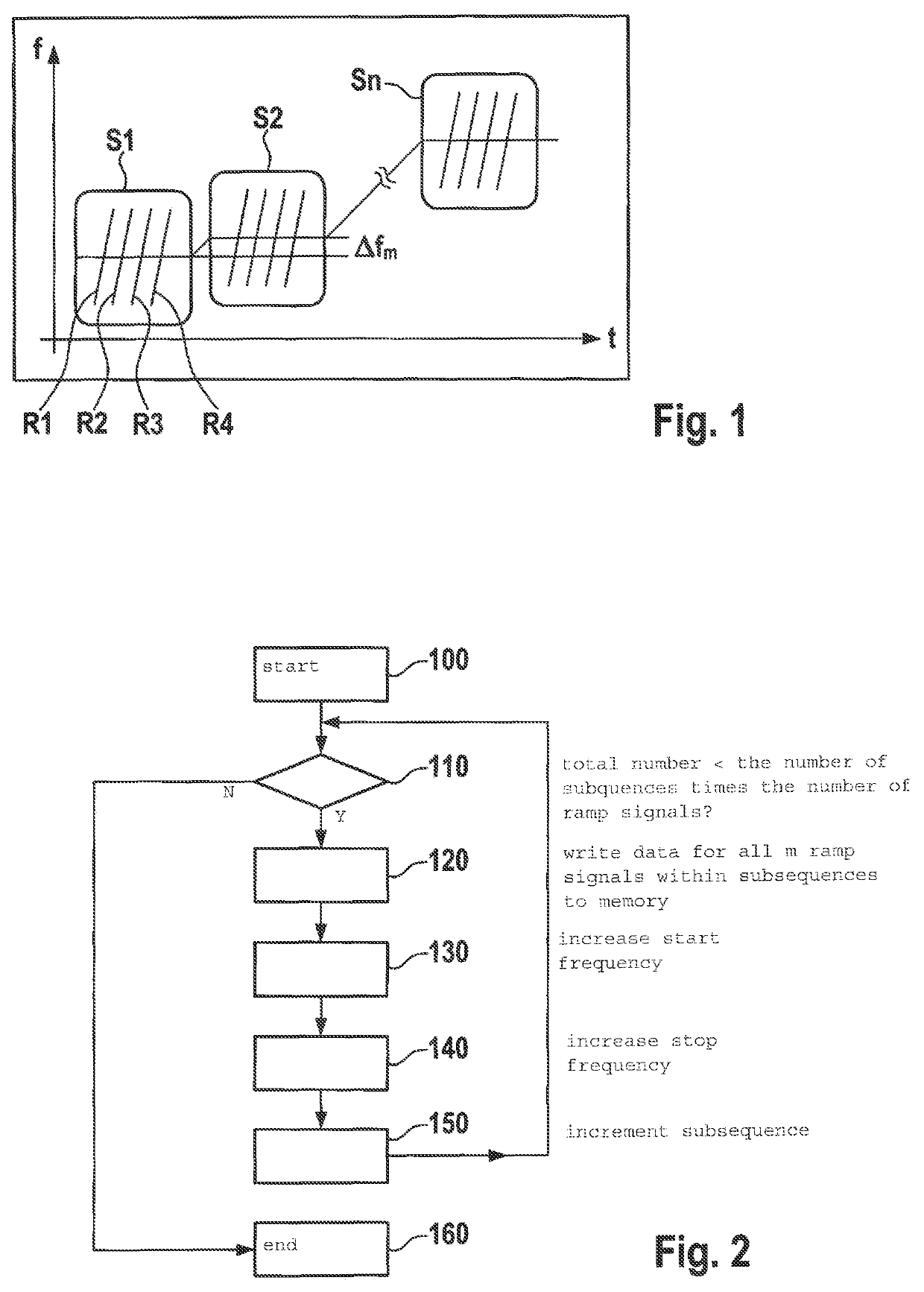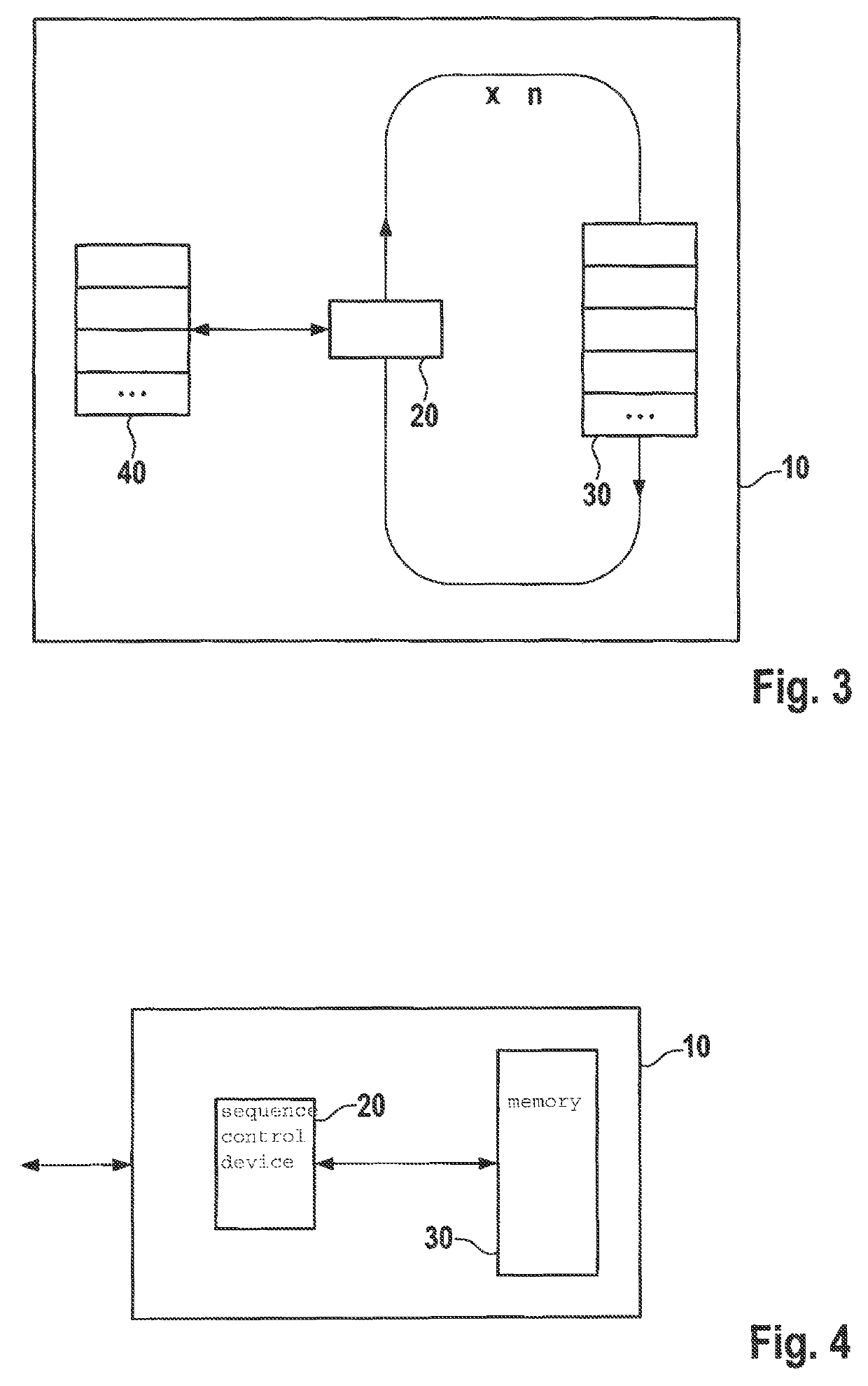Device for ascertaining operating data for a radar sensor
a radar sensor and operating data technology, applied in the direction of measuring devices, using reradiation, instruments, etc., can solve the problems of increasing memory requirements, inability to use mechanisms, and longer time for programming ramp signals, so as to save programming time
- Summary
- Abstract
- Description
- Claims
- Application Information
AI Technical Summary
Benefits of technology
Problems solved by technology
Method used
Image
Examples
Embodiment Construction
[0023]In accordance with the present invention, a formation of a linear frequency ramp signal from ramp to ramp is carried out according to defined rules, and may thus be calculated by an RF component itself, e.g., in the form of a monolithic microwave integrated circuit (MMIC). In this way, it is advantageously not necessary to ascertain all data for the frequency ramp signals with the aid of an externally situated microcontroller and to transmit these via a data bus to the RF component. As a result, a reduction in computing time is advantageously achievable. Advantageously, the method is independently able to write to ramp memories in the RF component according to a predefined pattern via a software or hardware mechanism.
[0024]FIG. 1 basically shows the modulation mechanism for frequency ramps of the radar sensor, which is known per se and implemented with the aid of the provided method. A first subsequence S1 having m=4 ramp signals R1 . . . R4 is apparent, in this case the numbe...
PUM
 Login to View More
Login to View More Abstract
Description
Claims
Application Information
 Login to View More
Login to View More - R&D
- Intellectual Property
- Life Sciences
- Materials
- Tech Scout
- Unparalleled Data Quality
- Higher Quality Content
- 60% Fewer Hallucinations
Browse by: Latest US Patents, China's latest patents, Technical Efficacy Thesaurus, Application Domain, Technology Topic, Popular Technical Reports.
© 2025 PatSnap. All rights reserved.Legal|Privacy policy|Modern Slavery Act Transparency Statement|Sitemap|About US| Contact US: help@patsnap.com


